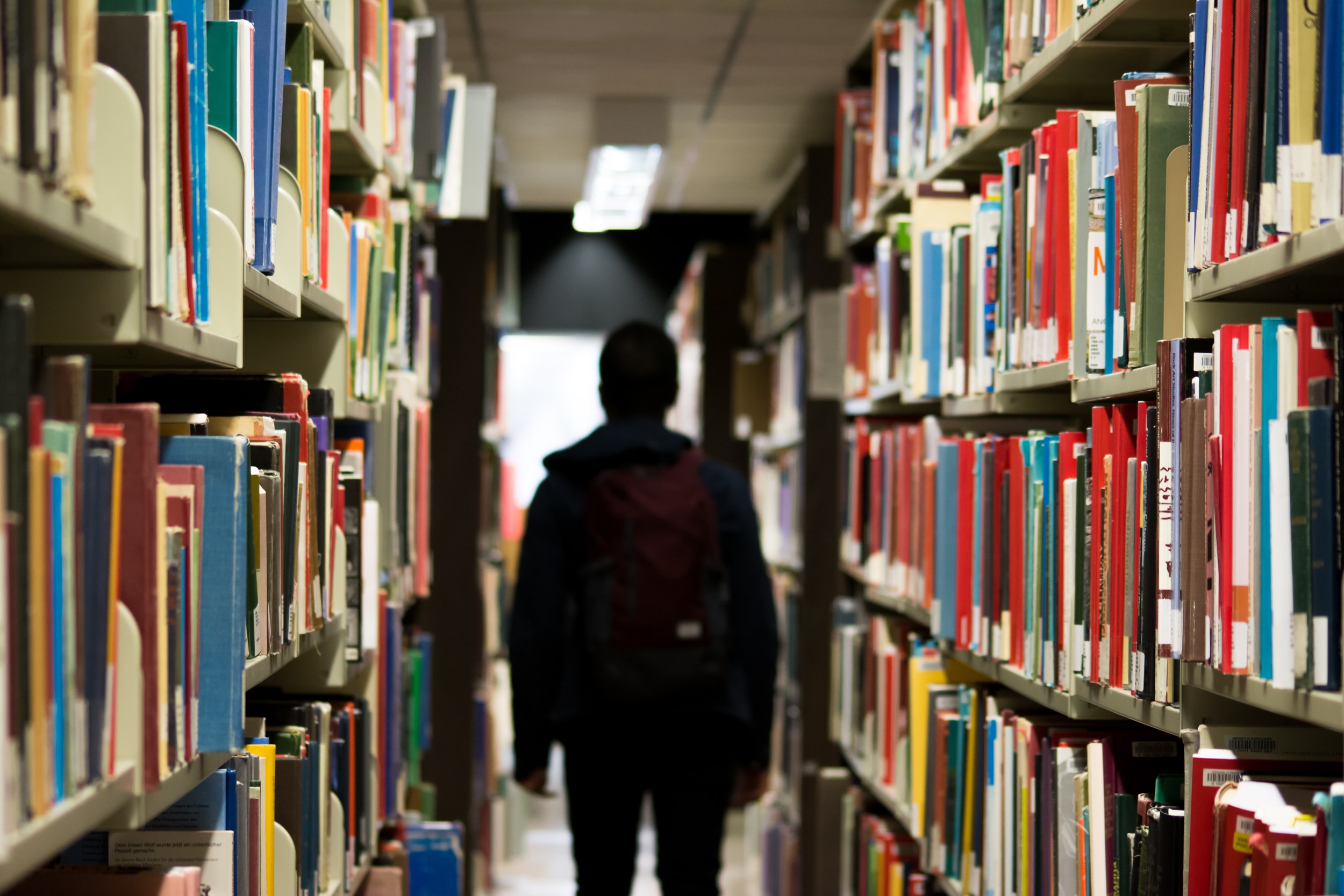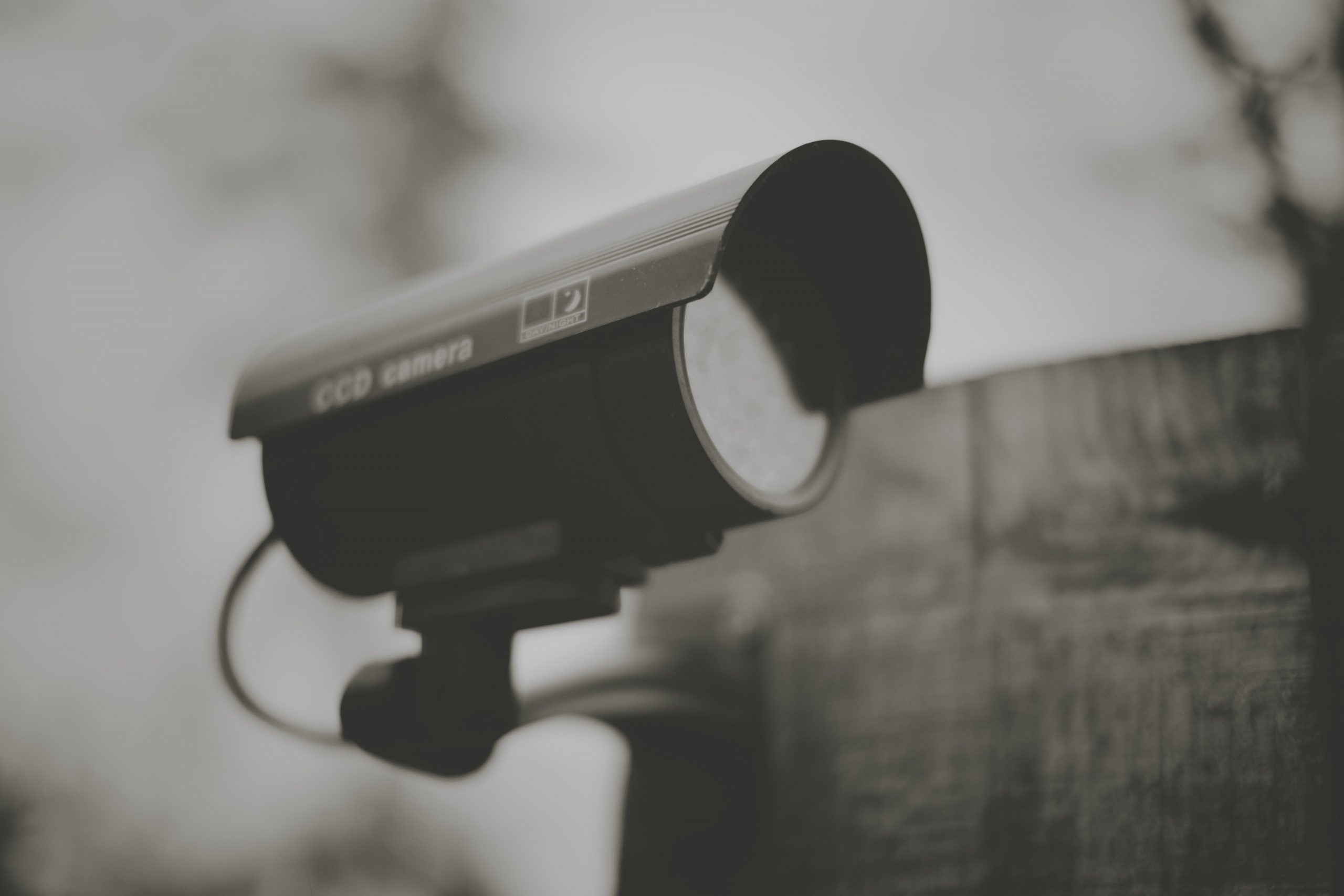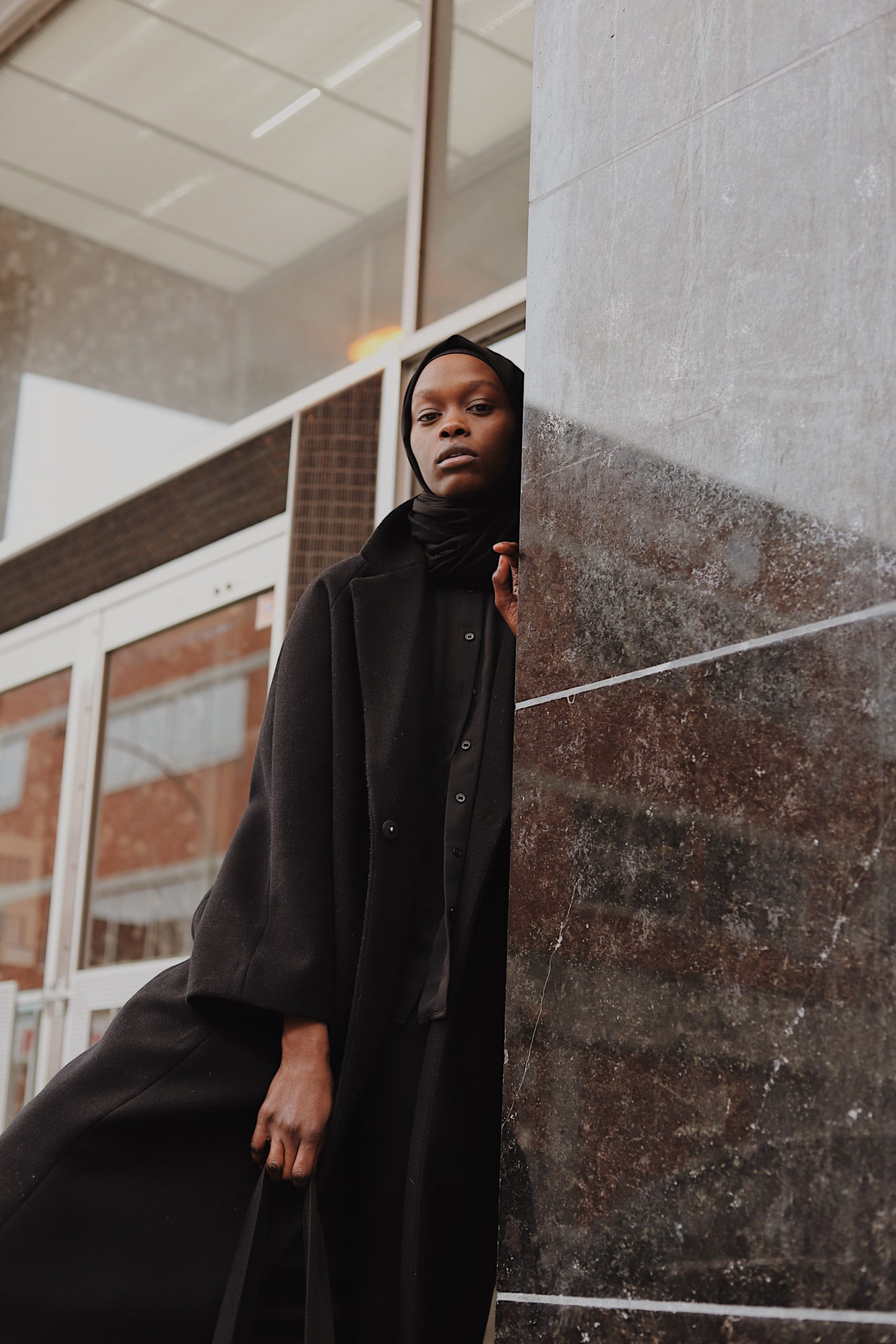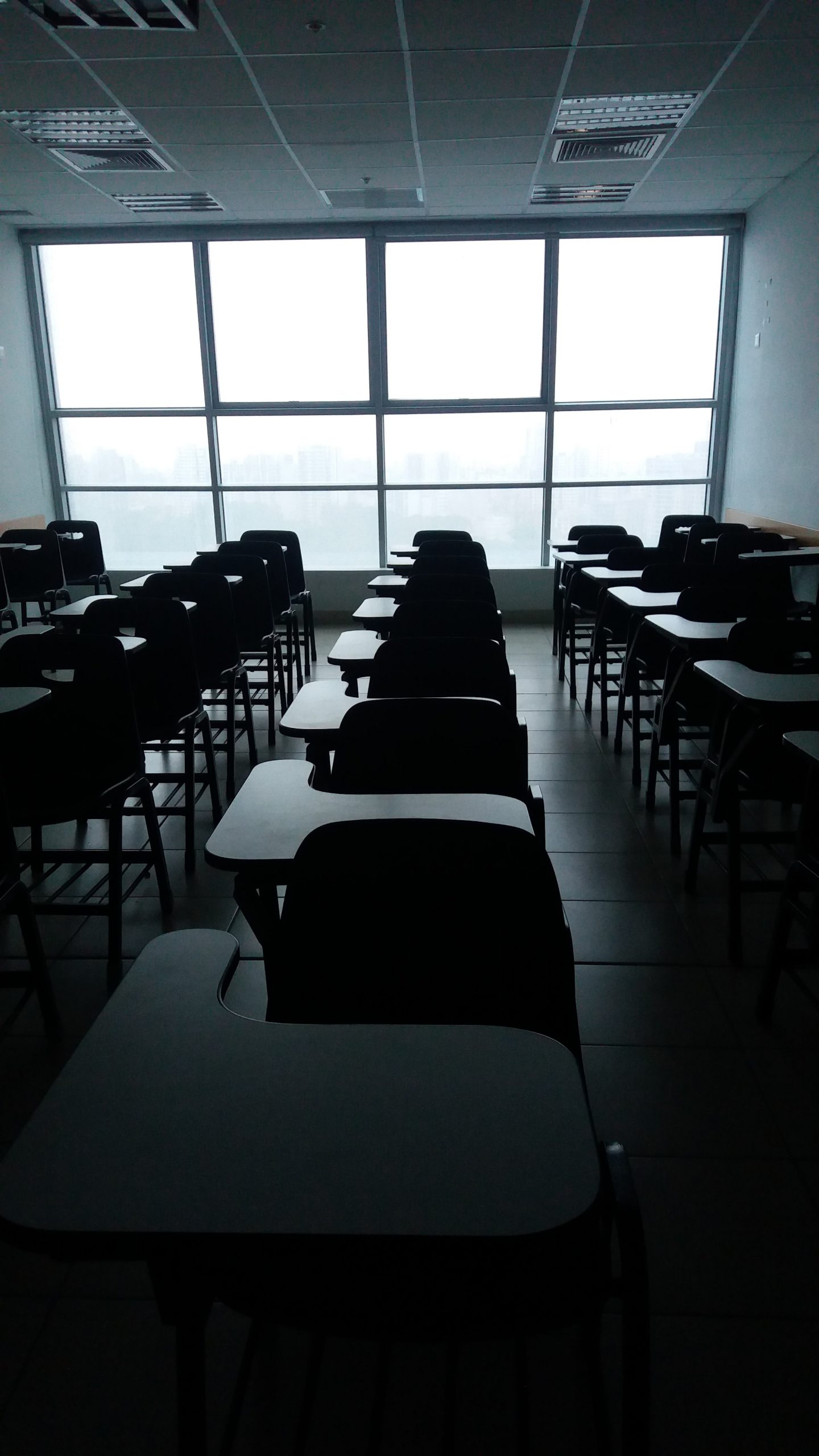#Society
The Black Muslim Experience In K-12 Education

Published

Introduction
The majority of American Muslims in the early twentieth century were Black and have a history in the United States that dates back to the late eighteenth century. In fact, it is estimated that 15% to 30% of the enslaved Black African population brought to the United States when slavery began were Muslim (Cole, Hypolite, & Atashi, 2020)1Cole, D., Hypolite, L., and Atashi, A. (2020). Black Muslims. In Islamophobia in Higher Education: Combating Discrimination and Creating Understanding, 99-115. Sterling, VA: Stylus Publishing.. For as long as Islam has been in the United States, it has been intertwined with the ideological framework built on White supremacy, anti-Black racism, and the systematic oppression of Black bodies (Auston, 2017)2Auston, D. (2017). Prayer, Protest, and Police Brutality: Black Muslim Spiritual Resistance in the Ferguson Era. Transforming Anthropology, 25(1), 11-22..
Although the history of Black Muslims spans more than two centuries, the experiences of Black Muslim students have been undertheorized and underrepresented within the research literature. This stems from a de-legitimization of Black Muslims within the literature on Muslims in the United States, which Rahman (2021)3Rahman, S. (2021) Black Muslim Brilliance: Confronting Antiblackness and Islamophobia Through Transnational Educational Migration, Curriculum Inquiry, 51(1), 57-74 claims to be indicative of an anti-Black perspective that fails to take seriously the contributions and experiences of Black Muslims. This is particularly important to acknowledge as Black Muslim students are more likely to experience intersections of anti-Black attitudes, institutionalized racism, and increasing Islamophobia (Ahmed & Muhammad, 2019)4Ahmed, S., and Muhammad, H. (2019). Black American Muslim Youth: Navigating Environments, Engaging New Pathways. In Abbas T. and Hamid S. (Eds.), Political Muslims: Understanding Youth Resistance in a Global Context, 23-51..
An Intersection of Identities
This intersection has been overlooked as the multiple identities of Black Muslim students have been ignored. An omission like this is an example of the separation of Black and Muslim identities as evidenced throughout American history (Cole et al., 2020)5Cole, D., Hypolite, L., and Atashi, A. (2020). Black Muslims. In Islamophobia in Higher Education: Combating Discrimination and Creating Understanding, 99-115. Sterling, VA: Stylus Publishing.. To better understand the experiences of Black Muslim students in school, especially those living in urban areas, it is critical to understand how institutionalized racism, anti-Black racism, and increasing Islamophobia shape the experiences of Black Muslim students.
Keep supporting MuslimMatters for the sake of Allah
Alhamdulillah, we're at over 850 supporters. Help us get to 900 supporters this month. All it takes is a small gift from a reader like you to keep us going, for just $2 / month.
The Prophet (SAW) has taught us the best of deeds are those that done consistently, even if they are small. Click here to support MuslimMatters with a monthly donation of $2 per month. Set it and collect blessings from Allah (swt) for the khayr you're supporting without thinking about it.
Recently, there has been an acknowledgment that we are in a historical moment characterized by the confluence of generalized and state sanctioned anti-Black racism with prevalent public and political Islamophobia (Auston, 2017)6Auston, D. (2017). Prayer, Protest, and Police Brutality: Black Muslim Spiritual Resistance in the Ferguson Era. Transforming Anthropology, 25(1), 11-22.. When considering the institutionalized racism present within schools, it is not a surprise that Black Muslim students are negatively impacted by the compounding intersection of their identities as they have been controlled by White supremacy, laws, and policies (Cole et al., 2020)7Cole, D., Hypolite, L., and Atashi, A. (2020). Black Muslims. In Islamophobia in Higher Education: Combating Discrimination and Creating Understanding, 99-115. Sterling, VA: Stylus Publishing..
In addition to the complex racial and social constructions that exist, Black Muslim students must manage the ways that racialized systemic injustices manifest in their daily experiences (Cole et al., 2020)8Cole, D., Hypolite, L., and Atashi, A. (2020). Black Muslims. In Islamophobia in Higher Education: Combating Discrimination and Creating Understanding, 99-115. Sterling, VA: Stylus Publishing.. Thus, this paper looks to elucidate the experiences of Black Muslim students by focusing on how institutionalized racism, anti-Black racism, and increasing Islamophobia shape the educational experiences of Black Muslim students living in urban areas within the United States. This paper concludes with a recommendation for more research that seeks to better understand the experiences of Black Muslim students who have been disregarded within the literature.
Critical Race Spatial Analysis

Poverty does not just affect the access to education for Black Muslim students; it has been associated with poor health conditions, lower educational achievement, and increased rates of risk-taking behaviors (Ahmed & Muhammad, 2019)13Ahmed, S., and Muhammad, H. (2019). Black American Muslim Youth: Navigating Environments, Engaging New Pathways. In Abbas T. and Hamid S. (Eds.), Political Muslims: Understanding Youth Resistance in a Global Context, 23-51.. In addition, institutionalized racism directly affects the socioeconomic conditions and opportunities afforded to Black Muslim students (Ahmed & Muhammad, 2019)14Ahmed, S., and Muhammad, H. (2019). Black American Muslim Youth: Navigating Environments, Engaging New Pathways. In Abbas T. and Hamid S. (Eds.), Political Muslims: Understanding Youth Resistance in a Global Context, 23-51., especially when considering the communities in which their schools are located.
Demographics and Public Policy
Furthermore, Black Muslim students live in predominantly Black communities (Ahmed & Muhammad, 2019)15Ahmed, S., and Muhammad, H. (2019). Black American Muslim Youth: Navigating Environments, Engaging New Pathways. In Abbas T. and Hamid S. (Eds.), Political Muslims: Understanding Youth Resistance in a Global Context, 23-51. which make them susceptible to the same policies and practices that reinforce racism. For instance, Black families have been historically redlined and Black Muslims are prone to the same policies and practices due to their racial identity. It was public policy which explicitly segregated every metropolitan area in the United States (Rothstein, 2018)16Rothstein, R. (2018). Preface. In The Color of Law: A Forgotten History of How Our Government Segregated America, vii-xvii. Liveright Publishing. where many Black Muslims reside.
The areas in which Black Muslim students live impact their educational experiences, especially when considering their race as a factor (as they are visibly Black before they are visibly Muslim). Thus, to better understand the role of space and race for Black Muslim students, CRSA can be used to spatially examine how structural and institutional factors influence space to impact the educational experiences and opportunities available to students based on their race (Vélez & Solórzano, 2017)17Vélez, V. N., and Solórzano, D. G. (2017). Critical Race Spatial Analysis: Conceptualizing GIS as a Tool for Critical Race Research in Education. In Critical Race Spatial Analysis: Mapping to Understand and Address Educational Inequity, 8-31. Sterling, VA: Stylus Publishing..
Anti-Black Racism
Anti-Black racism is deeply embedded in institutions, policies, and practices which have a serious impact on the educational outcomes of Black students. They are subjected to oppression in the form of anti-Black racism that is perpetuated through anti-blackness (Lopez & Jean-Marie, 2021)18Lopez, A. E., and Jean-Marie, G. (2021). Challenging Anti-Black Racism in Everyday Teaching, Learning, and Leading: From Theory to Practice. Journal of School Leadership, 31(1-2), 50-65.. Anti-Black racism is so common within the United States that it includes intended and unintended racial violence perpetrated upon Black students through school policies and practices (Caldera, 2020)19Caldera, A. (2020). Eradicating Anti-Black Racism in U.S. Schools: A Call-to-Action for School Leaders. Diversity, Social Justice, and the Educational Leadership, 4(1), 12-25..
Black students are constantly navigating school environments that are racially hostile in which racism and racial profiling broadly take place within the education system (Love, 2013)20Love, B. L. (2013). “I See Trayvon Martin”: What Teachers Can Learn from the Tragic Death of a Young Black Male. The Urban Review, 45(3), 1-15.. Since this paper looks at the experiences of Black Muslim students, it is important to focus on the ways anti-Black racism is exercised through systemic acts of violence (e.g., disproportionate discipline, policing, racial profiling, etc.).
Systemic acts of violence within schools are carried out by the policing of Black students in which they are racially profiled and surveilled. Policing does not only harm Black students, but it has also come to harm Muslim students. Therefore, it is essential to acknowledge the way Black Muslim students experience anti-Black racism through policing, which has become more prevalent in the areas Black Muslim students reside in. For instance, the presence of police officers at schools are more likely to be within large, urban, and predominantly minority schools which contributes to racial disparities as racial profiling practices begin to take place within schools (Heitzeg, 2014)21Heitzeg, N. A. (2014). Chapter One: Criminalizing Education: Zero Tolerance Policies, Police in the Hallways, and the School to Prison Pipeline. Counterpoints, 453, 11–36..
Analysis of Surveillance

In all, anti-Black racism should be seriously considered when understanding the experiences of Black Muslim students in school and their experiences within the education system. Black Muslim students are more likely to experience racism due to their race than they are for their religion due to the racialization that occurs within the education system and how anti-Black racism is deeply rooted within institutions, policies, and practices in the United States.
At the same time, Islamophobia should be considered in connection with anti-Black racism when acknowledging the intersection of Black Muslim students’ racialized identities and how they are susceptible to various forms of oppression as there has been a lack of literature on how Black Muslim youth navigate the intersecting oppressions of anti-Black racism and Islamophobia (Rahman, 2021)23Rahman, S. (2021) Black Muslim Brilliance: Confronting Antiblackness and Islamophobia Through Transnational Educational Migration, Curriculum Inquiry, 51(1), 57-74..
Islamophobia
Islamophobia has been defined as the fear of and hostility toward Muslims and Islam that is rooted in racism which results in individual and systemic discrimination, exclusion, and violence targeting Muslims and those perceived as Muslim (Green, 2019)24Green, T. (2019). The Historical Foundations of Islamophobia. In The Fear of Islam, Second Edition: An Introduction to Islamophobia in the West(pp. 41-76). Minneapolis: 1517 Media.. While Islamophobia was once categorized as a dislike or prejudice against Muslims, it now encompasses the presumption that Islam is inherently violent, alien, and unassimilable, which is a presumption driven by the belief that Muslim identity correlates with a propensity for terrorism (Beydoun, 2018)25Beydoun, K. A. (2018). Between Anti-Black Racism and Islamophobia. In American Islamophobia: Understanding the Roots and Rise of Fear, 152-173. Oakland, California: University of California Press..
The experiences of Islamophobia for Muslims after 9/11 have led to a new form of racism in which Muslims are racialized within the United States (Itaoui, 2020)26Itaoui, R. (2020). Mapping Perceptions of Islamophobia in the San Francisco Bay Area. California, Social and Cultural Geography, 21(4), 479-506.. This racialization is particularly important to address for Black Muslim students who experience an intersection of anti-Black racism and Islamophobia.
Auston (2017)27Auston, D. (2017). Prayer, Protest, and Police Brutality: Black Muslim Spiritual Resistance in the Ferguson Era. Transforming Anthropology, 25(1), 11-22. claims that we are in a time of prevalent public and political Islamophobia and Bayoumi (2008)28Bayoumi, M. (2008). How Does it Feel to be a Problem?: Being Young and Arab in America. New York: Penguin Press. claims that Islamophobia has become a political phenomenon exploited by politicians.
The politicization of Islamophobia contributes to institutionalized racism as the policies and practices that arise stem from racializing Muslims and viewing them as threats. As a result, Black Muslim students are expected to navigate schools that mirror the Islamophobic attitudes found within society. Islamophobia within schools presents itself in numerous ways, but a commonality with Islamophobia and anti-Black racism is the way students come in contact with the police.
In the United States, Black Muslim students experience heightened surveillance and punishment as targets of intersecting systems of discrimination (Rahman, 2021)29Rahman, S. (2021) Black Muslim Brilliance: Confronting Antiblackness and Islamophobia Through Transnational Educational Migration, Curriculum Inquiry, 51(1), 57-74.. When Muslim youth and communities are criminalized and targeted by police, Muslims are subject to increasing threats of violence and discrimination within schools (Ali, 2018)30Ali, A. (2018). Learning in the Shadow of the War on Terror: Toward a Pedagogy of Muslim Indignation. In Daulatzai S. and Rana J. (Eds.), With Stones in Our Hands: Writings on Muslims, Racism, and Empire, 244-257. Minneapolis; London: University of Minnesota Press.. This is particularly common for Black Muslim students who are already exposed to criminalization and targeting by police due to their race.
Institutionalized Racism
The impact of racism has an effect on Black Muslim students and should be taken into consideration as the stereotypes and attitudes they have experienced have served to institutionalize racism (Ahmed & Muhammad, 2019)31Ahmed, S., and Muhammad, H. (2019). Black American Muslim Youth: Navigating Environments, Engaging New Pathways. In Abbas T. and Hamid S. (Eds.), Political Muslims: Understanding Youth Resistance in a Global Context, 23-51.. For instance, Black Muslim students experience incidents of racial profiling and harassment with disproportionate numbers related to incarceration, profiling, policing, and arrest (Ahmed & Muhammad, 2019)32Ahmed, S., and Muhammad, H. (2019). Black American Muslim Youth: Navigating Environments, Engaging New Pathways. In Abbas T. and Hamid S. (Eds.), Political Muslims: Understanding Youth Resistance in a Global Context, 23-51.. These types of instances reinforce the school-to-prison pipeline which particularly affects Black individuals.
The school-to-prison pipeline has not been seriously considered in relation to Black Muslim students, but it should be as both Black students and Muslim students undoubtedly come into contact with the police within school contexts and are treated unjustly and perceived as threats due to their race or religion. While there is literature expounding on the experiences of Black students and their interaction within the prison system, this literature is missing within the experiences of Muslim students, especially Black Muslim students. For instance, after 9/11, Muslims were randomly detained and interrogated due to their religious beliefs (Bayoumi, 2008)33Bayoumi, M. (2008). How Does it Feel to be a Problem?: Being Young and Arab in America. New York: Penguin Press. and became more prone to interacting with the police.
When considering how their identity as a Black and Muslim individual make Black Muslim students more susceptible to policing within schools for both their race and religion, the school-to-prison pipeline should be investigated in more detail. Ahmed and Muhammad (2019)34Ahmed, S., and Muhammad, H. (2019). Black American Muslim Youth: Navigating Environments, Engaging New Pathways. In Abbas T. and Hamid S. (Eds.), Political Muslims: Understanding Youth Resistance in a Global Context, 23-51. highlight how
“Black Muslim youth experience incidents of racial profiling and harassment. They are also disproportionately incarcerated, profiled, policed, and arrested (Kerby, 2012)35Kerby, S. (2012). The Top 10 Most Startling Facts about People of Color and Criminal Justice in the United States. Center for American Progress.. They have higher rates of juvenile incarceration and are more likely to be sentenced to adult prison” (p. 28).
The physical characteristics of race make Black Muslims visibly Black before they are visibly Muslim. As a result, the experiences which are more specific to Black students should be considered when understanding the experiences of Black Muslim students within K-12 education in the United States. Their experiences as religious minorities are only going to add to their experiences as racial minorities.
Black Muslim youth experience incidents of racial profiling and harassment. They are also disproportionately incarcerated, profiled, policed, and arrested. They have higher rates of juvenile incarceration and are more likely to be sentenced to adult prison.Click To Tweet The physical characteristics of race make Black Muslims visibly Black before they are visibly Muslim. Experiences specific to Black students should be considered when understanding the experiences of Black Muslim students within K-12 education in the US.Click To TweetConfluence of Anti-Black Racism and Islamophobia

As anti-Black racism and Islamophobia both present themselves within education spaces, it is particularly important to understand the intersections of such discrimination and how it affects Black Muslim students. The anti-Black racism and Islamophobia that Black Muslim students experience in conjunction explains the way they move through the world as profiled subjects (Auston, 2017)38Auston, D. (2017). Prayer, Protest, and Police Brutality: Black Muslim Spiritual Resistance in the Ferguson Era. Transforming Anthropology, 25(1), 11-22..
At the Intersection
It is important to note that within the United States, anti-Black racism has been and is much more harmful than Islamophobia when considering its prevalence and the way it is deeply embedded in institutions, policies, and practices. At the same time, the experiences of Black Muslim students cannot be understood without understanding the intersection of anti-Black racism and Islamophobia which permeate society.
For instance, Mauleón (2018)39Mauleón, E. (2018). Black Twice: Policing Black Muslim Identities. U.C.L.A. Law Review, 65, 1326-1390. explains the way diminishing Muslim identity may only serve to make Black Muslims more vulnerable to policing that captures Blacks, while diminishing Black identity may only serve to make them more exposed as Muslims. Black and Muslim individuals have been confronted with implemented policies that create a more hostile environment for them as policies have been inspired by both minoritized groups being perceived as threats (Cole et al., 2020)40Cole, D., Hypolite, L., and Atashi, A. (2020). Black Muslims. In Islamophobia in Higher Education: Combating Discrimination and Creating Understanding, 99-115. Sterling, VA: Stylus Publishing.. This is important to reflect on as the intersection of anti-Black and anti-Muslim laws and policies systematically oppress and control Black Muslims, which then trickles into the education system.
Black Muslims find themselves at an intersection of scrutiny and policing where both Black and Muslim individuals have been targets of overpolicing and mass surveillance that reinforce the perception of these communities as inherently violent and threatening (Mauleón, 2018)41Mauleón, E. (2018). Black Twice: Policing Black Muslim Identities. U.C.L.A. Law Review, 65, 1326-1390.. Since racism is deeply embedded in institutions, policies, and practices, it is no surprise that policing occurs within schools as schools reflect the ideologies within society. When policing occurs in schools, Black Muslim students are more prone to being racialized and affected by the aggregation of both their Black and Muslim identities.
Conclusion

If Black students are to achieve their full potential in the education system and schools, Lopez and Jean-Marie (2021)43Lopez, A. E., and Jean-Marie, G. (2021). Challenging Anti-Black Racism in Everyday Teaching, Learning, and Leading: From Theory to Practice. Journal of School Leadership, 31(1-2), 50-65. highlight the importance of educators examining how Black students are impacted by systemic anti-Black racism and how those practices are perpetuated. For Black Muslim students, there should also be an examination of how anti-Black racism and Islamophobia intersect and are maintained through institutionalized racism.
It is also useful to utilize CRSA in understanding how urban areas are spaces with structural and institutional factors which impact the educational experiences and opportunities (Vélez & Solórzano, 2017)44Vélez, V. N., and Solórzano, D. G. (2017). Critical Race Spatial Analysis: Conceptualizing GIS as a Tool for Critical Race Research in Education. In Critical Race Spatial Analysis: Mapping to Understand and Address Educational Inequity, 8-31. Sterling, VA: Stylus Publishing. for Black Muslim students based on their race (and religion). It is necessary that the urban areas Black Muslim students reside in are considered when looking to understand what Black Muslim students confront within the education system.
Resistance in Education
Regardless of the institutionalized racism, anti-Black racism, and Islamophobia Black Muslim students confront, they learn to resist institutionalized oppression and embrace their racial, religious, and national identities (Rahman, 2021)45Rahman, S. (2021) Black Muslim Brilliance: Confronting Antiblackness and Islamophobia Through Transnational Educational Migration, Curriculum Inquiry, 51(1), 57-74.. Auston (2017)46Auston, D. (2017). Prayer, Protest, and Police Brutality: Black Muslim Spiritual Resistance in the Ferguson Era. Transforming Anthropology, 25(1), 11-22. claims that Black Muslims in the United States have always been about the struggle for racial equality and religious freedom shaped by the fight on multiple fronts against state power, anti-Blackness, and White supremacy.
When considering how the education system continues to perpetuate racism that is deeply embedded in institutions, policies, and practices, it is useful to consider the experiences of Black Muslim students in K-12 education and how they navigate spaces in which state power, anti-Blackness, and White supremacy are present. Since Black Muslims continue to struggle for racial equality and religious freedom, we are not able to understand what they have endured without looking at the confluence of anti-Black racism and Islamophobia that has shaped the experiences of Black Muslim students both in and out of schools.
It is imperative that those within the field of education consider the experiences of Black Muslim students as anti-Black racism and Islamophobia are forms of oppression they experience within the education system. As mentioned previously, the undertheorization and underrepresentation of Black Muslim students has been expressed as an anti-Black perspective that does not consider the contributions and experiences of Black Muslims. If we want schools to be inclusive and supportive of all students, it is crucial that we center the voices of those who have been marginalized for so long.
Related reading:
Keep supporting MuslimMatters for the sake of Allah
Alhamdulillah, we're at over 850 supporters. Help us get to 900 supporters this month. All it takes is a small gift from a reader like you to keep us going, for just $2 / month.
The Prophet (SAW) has taught us the best of deeds are those that done consistently, even if they are small. Click here to support MuslimMatters with a monthly donation of $2 per month. Set it and collect blessings from Allah (swt) for the khayr you're supporting without thinking about it.
Rodaina El-Haj-Ibrahim is a Palestinian-American who is currently working towards her PhD in the field of Education. She holds a Masters degree in Education, Society, and Culture and a Bachelors degree in Education Sciences. Her research focuses on the educational experiences of Muslim students and the ways Islam may influence academic success in higher education.


The Limits Of Obedience In Marriage: A Hanafi Legal Perspective

Kuwait Strips Prominent Thinker Tariq Suwaidan Of Citizenship

Far Away [Part 1] – Five Animals

Ahmed Al-Ahmed And The Meaning Of Courage

AI And The Dajjal Consciousness: Why We Need To Value Authentic Islamic Knowledge In An Age Of Convincing Deception

Op-Ed – When Islamophobes Try To Intimidate Us, They Underestimate Our Resolve: A Call to Stand With America’s Muslim Students

Who’s Afraid Of Dr. Naledi Pandor? – Zionist Panic and a Visa Revoked

November 29 Is The International Day Of Solidarity With The Palestinian People – What Will You Do?

Op-Ed: What Muslims Will Really Be Talking About Over the Halal Turkey This Thanksgiving

Owning Our Stories: The Importance Of Latino Muslim Narratives

[Dhul Hijjah Series] Calling Upon the Divine: The Art of Du’a (Part 1)

IOK Ramadan 2025: Four Steps | Sh Zaid Khan

IOK Ramadan 2025: Do Your Best | Sh Zaid Khan

IOK Ramadan 2025: Giving Preference to Others | Sh Zaid Khan

IOK Ramadan 2025: Which Group Are We In? | Sh Zaid Khan
MuslimMatters NewsLetter in Your Inbox
Sign up below to get started
Trending
-
#Life3 weeks ago
Op-Ed – When Islamophobes Try To Intimidate Us, They Underestimate Our Resolve: A Call to Stand With America’s Muslim Students
-
#Society1 month ago
What Would Muhammad Do? – Silencing The Prophet: Liberal Islam’s Cowardice In Gaza
-
#Culture1 month ago
K-Pop Demon Hunters: Certainly Not for Kids
-
#Current Affairs3 weeks ago
Who’s Afraid Of Dr. Naledi Pandor? – Zionist Panic and a Visa Revoked









hus8989
May 24, 2022 at 12:16 AM
This is a really important topic to bring awareness to.